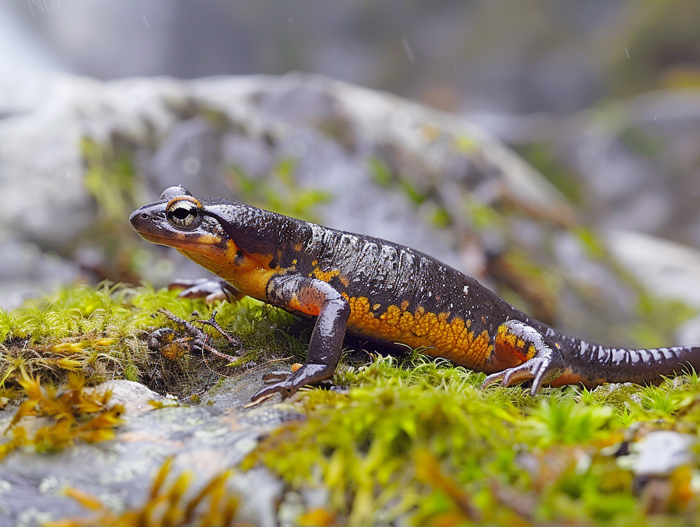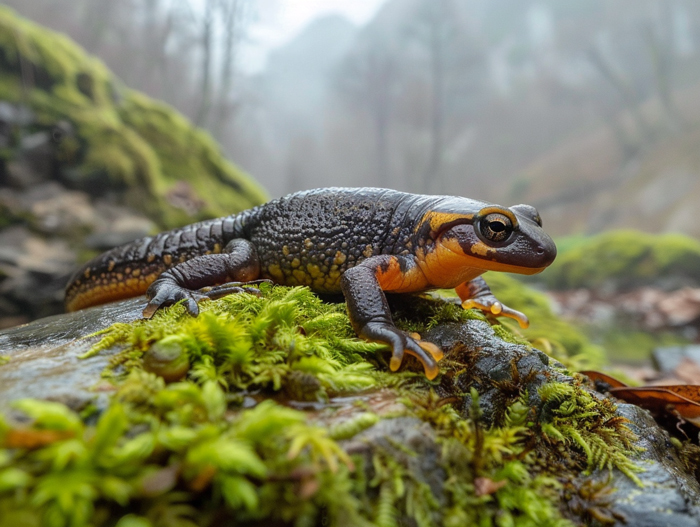Are newts salamanders? If you’ve ever wondered about the relationship between these fascinating amphibians, you’re in the right place. Newts and salamanders share some similarities, but there are key differences that set them apart. Understanding these distinctions can help you appreciate the unique characteristics of each creature.
While newts and salamanders belong to the same class of animals, they are not the same. Newts are a type of salamander, but not all salamanders are newts. Delving into the world of these creatures reveals a diverse range of species with their own distinct traits and habitats. Let’s explore the intriguing world of newts and salamanders to uncover the truths behind their similarities and differences.
Key Takeaways
- Newts are a type of salamander, but not all salamanders are newts.
- Newts and salamanders share similarities but have key differences in their characteristics and habitats.
- Newts are characterized by slender bodies, distinctive tails, and bright warning colors due to toxic skin secretions.
- Salamanders, with over 600 species worldwide, are known for their ability to regenerate lost limbs and can be found in diverse environments.
- Newts belong to the Salamandridae family, while salamanders encompass various families like Ambystomatidae and Plethodontidae.
- Understanding the distinctions between newts and salamanders provides insight into their behaviors, habitats, and unique traits.
What are Newts and Salamanders?

Defining Newts
- Newts are amphibians that belong to the Salamandridae family.
- They are characterized by their slender bodies, distinctive tails, and smooth, moist skin.
- Newts often exhibit bright colors as a warning to predators about their toxic skin secretions.
- Salamanders are a diverse group of amphibians with over 600 species worldwide.
- They have long bodies, short legs, and are known for their ability to regenerate lost limbs.
- Salamanders can be found in various habitats, from forests to mountain ranges and aquatic environments.
By understanding the unique traits of newts and salamanders, you gain insight into the intriguing area of these captivating amphibians.
Key Characteristics of Newts and Salamanders

Physical Features
- Newts: Slender bodies and distinctive tails
- Salamanders: Ability to regenerate lost limbs
Habitats
- Newts: Often found near water bodies like ponds and streams
- Salamanders: Diverse, inhabit various environments such as forests and wetlands
- Newts: Colorful warning signals due to toxic skin secretions
- Salamanders: Varied behaviors based on species, some nocturnal or burrowing
Newts vs. Salamanders: Main Differences

Taxonomy
- Newts belong to the family Salamandridae, while salamanders encompass various families like Ambystomatidae and Plethodontidae.
- Both newts and salamanders are types of amphibians.
- Newts are a subgroup of salamanders, distinguished by semi-aquatic lifestyles and unique characteristics.

Biology
- Newts typically have rougher skin and can range in size from two to six inches.
- Salamanders come in a wider array of sizes, from the tiny Thorius arboreus to the giant Chinese giant salamander.
- Both have glandular skin and can secrete toxins as a defense mechanism.
- Newts spend part of their lives in water and have webbed hind feet for swimming.
- Salamanders exhibit diverse behaviors, with some being terrestrial, arboreal, or aquatic.
- Newts are more likely to have bright colors as warning signals, while salamanders vary in coloration depending on their habitats.
Conclusion
You now have a clearer understanding of the differences between newts and salamanders. Newts, a subgroup of salamanders, have distinct features such as rough skin and smaller sizes. Their semi-aquatic lifestyle sets them apart, with webbed hind feet for swimming. Salamanders, on the other hand, exhibit a wide range of behaviors and sizes. Newts’ vibrant colors serve as warning signals due to their toxic skin secretions, while salamanders’ coloration adapts to their surroundings. These distinctions highlight the intriguing area of these amphibians.

Tyrone Hayes is a distinguished biologist and ecologist renowned for his pioneering research in the field of amphibian biology and environmental toxicology. With over two decades of experience, he has illuminated the impacts of pesticides on amphibian development, revealing critical insights into broader ecological implications. Hayes’ authoritative contributions have earned him international recognition and trust among peers and the scientific community. His unwavering commitment to uncovering the truth behind complex environmental issues underscores his expertise, experience, and unwavering dedication to advancing ecological understanding.
